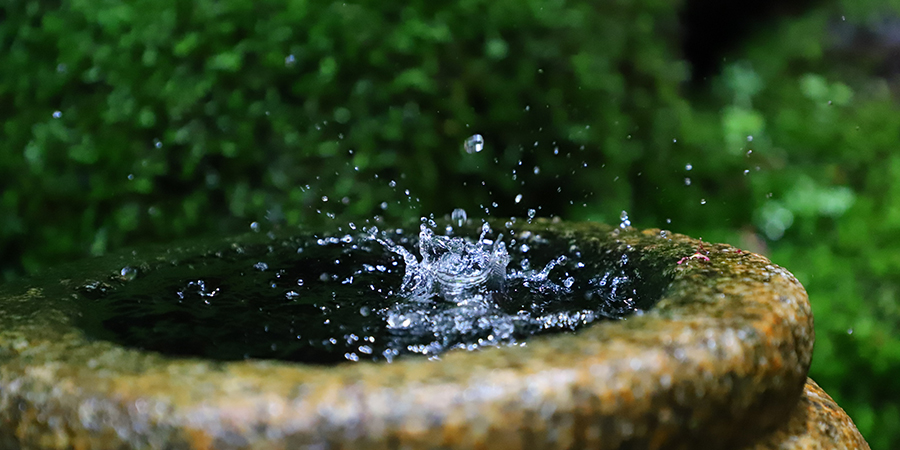In a bottle of sake, about 80% is pure water. Water is used in all the steps of the brewing process including washing, soaking, steaming the rice, addition to the fermentation tanks and dilution before bottling. That adds up to almost 30 times the amount of rice by weight- definitely worth some attention! Water quality plays an important role in defining the quality and character of a sake.
Japanese Waters
Most of the traditional sake brewing locations are located near a good supply of water sources such as rivers, wells, or springs. Two of the most renowned locations of high-quality brewing water come from the Nada region in the city of Kobe in Hyogo prefecture, and Fushimi in Kyoto prefecture.
Soft Water or Hard Water?
Japanese waters are generally soft because of the low presence of limestone in the archipelago which filters the waters as they make their way to the surface. But having said that, it is entirely possible to brew sake from “harder” waters. It is the composition of the water that is of more importance.
Hard waters contain more minerals like potassium, phosphorus acid and magnesium. One might assume they are contaminants, however these three minerals are actually desirable. They aid the propagation of yeast in the yeast starter, assist proper development of good rice koji and speed up fermentation.
Dangers of Iron and Manganese
The real contaminants, iron and manganese, are considered unsuitable and are detrimental to sake production. Iron wreaks the most havoc, darkening the colour of sake and affecting both the flavour and aroma profile of sake. Manganese also causes a chemical reaction that discolours and “de-lustres” the appearance of a sake. This is why it’s imperative that water used for brewing must be tasteless, odourless, colourless and clear. It must not contain organic substances or harmful microorganisms. Many breweries take precautions by using filtered well water.
Miyamizu Water from Nada Prefecture
The water from Nada prefecture, known as Miyamizu, has long been famous for its suitability for sake brewing. These waters can be traced back to rainfalls in the lush Rokko mountains. As the underground water flows through the sub-strata, the iron reacts with oxygen and is deposited, resulting in water that is low in iron. Simultaneously, the process accumulates beneficial potassium and phosphate along its path. Miyamizu water is classified as hard water and in Japanese is known as “kohsui”. Sakes from Nada are examples of masculine sakes, or in Japanese, “Otoko-sake”, which are robust, sharp and dry.
On the other hand, water from the Fushimi area of Kyoto is relatively low in mineral content and softer, known as “Nansui”. With a lower mineral content, the soft water brewing process was specially developed to produce an appropriately mellow style. Their soft water favours a slow fermentation, allowing the fruity ginjo aromas to develop. Sake made with soft water is called “Onna-zake” or feminine sake. Such sake is usually fine-textured and smooth on the palate.
Water Additions
After pressing, the alcohol content of any sake may be as high as 22%. Therefore most sakes are diluted with pure water, decreasing the alcohol to 15-16%. This lower alcohol content makes it easier to discern and enjoy the flavours and aromas of fine sake.
The softer the water used for dilution, the mellower the taste of the sake. This is a trait well known to whisky drinkers; adding hard water to whisky gives a sharp bitter taste while using distilled water results in a soft/mild taste. There are rare exceptions to this practice of dilution over the last decade where brewers produce “muroka nama genshu” sakes which are unpasteurized, un-charcoal-filtered and un-diluted, with the intention to keep it as close to the original natural state as possible.
With the many components involved in sake making, it’s surprisingly easy to overlook one of the key contributors to quality. So the next time you take a sip of your sake, remember to appreciate the intricacies of its water component.










